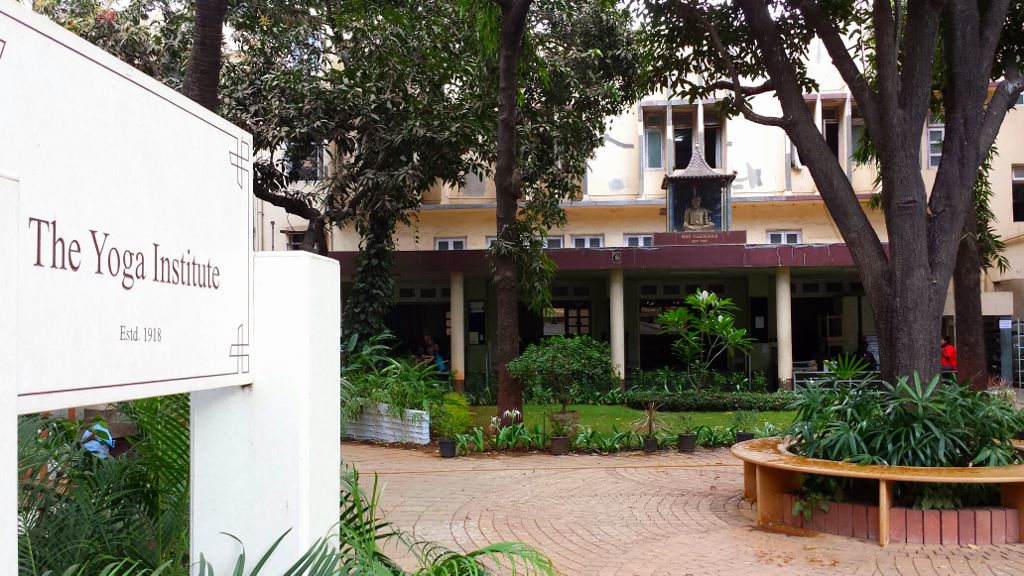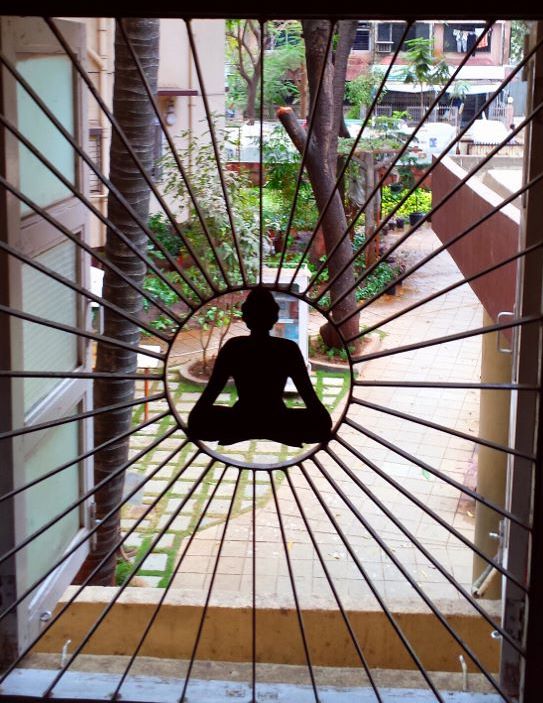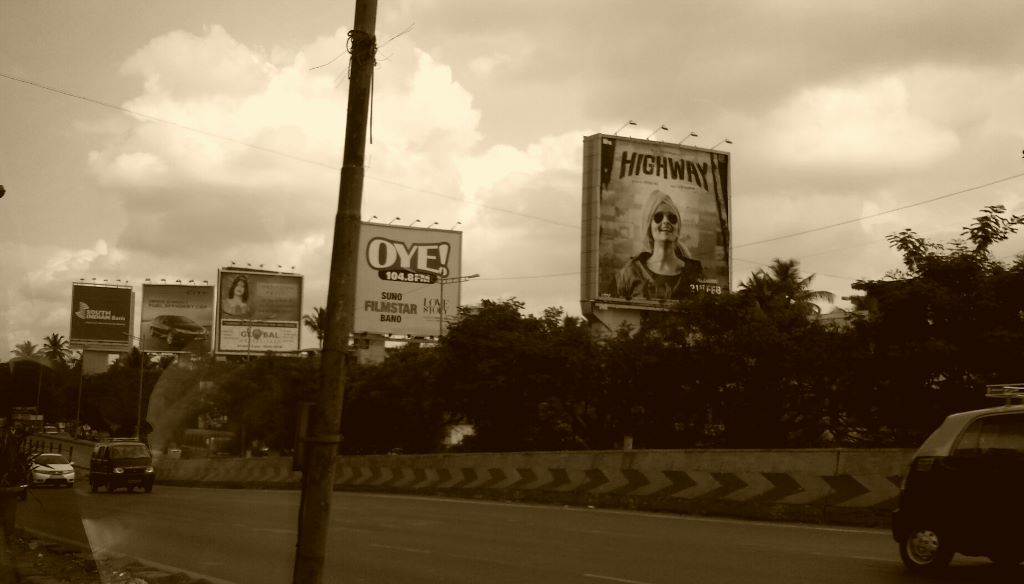 Compassion fatigue “is an expected and common response to the professional task of routinely caring for children at the end of life” (Rourke, 2007). It is a tragic stress reaction (often accompanied by PTSD-like symptoms) from caregivers who empathize with those who suffer. What can be done to prevent the damaging effects of compassion fatigue? In my case, mindfulness, sometimes generated through yoga.
Compassion fatigue “is an expected and common response to the professional task of routinely caring for children at the end of life” (Rourke, 2007). It is a tragic stress reaction (often accompanied by PTSD-like symptoms) from caregivers who empathize with those who suffer. What can be done to prevent the damaging effects of compassion fatigue? In my case, mindfulness, sometimes generated through yoga.
After about eight years of practicing yoga formally and informally in the USA and NZ, I was excited to spend my last day in India at yoga centers in the “posh Bollywood hotspot:” Bandara. Treating myself to classes there was my relaxing reward at the end of an intensely stimulating two weeks in India (and 36 hours of infamous travelers’ health issues which caught up with me on Day 12 ½).
Yoga is a meditative practice aimed at calming both the mind and body. Yoga was introduced at the International Children’s Palliative Care Network Conference as a way to practice healthy self-care and prevent compassion fatigue. I liken it to giving oneself a massage while clearing your mind for fresh dreams. The term yoga derived from yujir yoga (to yoke). I used it after the conference to yoke my tired mind back to a body that had been missing its attention.
I participated in four yoga classes at two institutions on my last day. At the first leafy center (“Yoga Institute,” the oldest organized yoga center in the world) which smells like the fresh trees and shrubs lining the courtyard, I accidentally joined the second half of a teacher training course. The course instructors were not gentle like the ones I’d practiced with in Berkeley. They were not there to meditate; they were there to ensure that the future teachers were doing the stretches properly so that they could go on and spread the mission.
The second yoga class I sat in on was a woman’s yoga class. It was taught in Hindi, so I was thankful that yoga is like Catholic church: the prayers and positions are largely the same around the world; only the styles are different. The teachers of the second class were not there to meditate either; they were there to ensure that others received as many health benefits as they could. One of them did speak a word of English, “Enjoy.” She repeated this to me several times with a rather stern expression. I enjoyed the irony. The teachers spoke for long periods of time between yoga commands, which the lady next to me briefed me on after class. The teachers were giving nutrition and back care advice.
I rode a rickshaw across Bandara to the second yoga center, “Yoga House,” for a pregnancy yoga class (maybe I’m a few -100 months pregnant? They’ll never know) and an Ashtanga class.
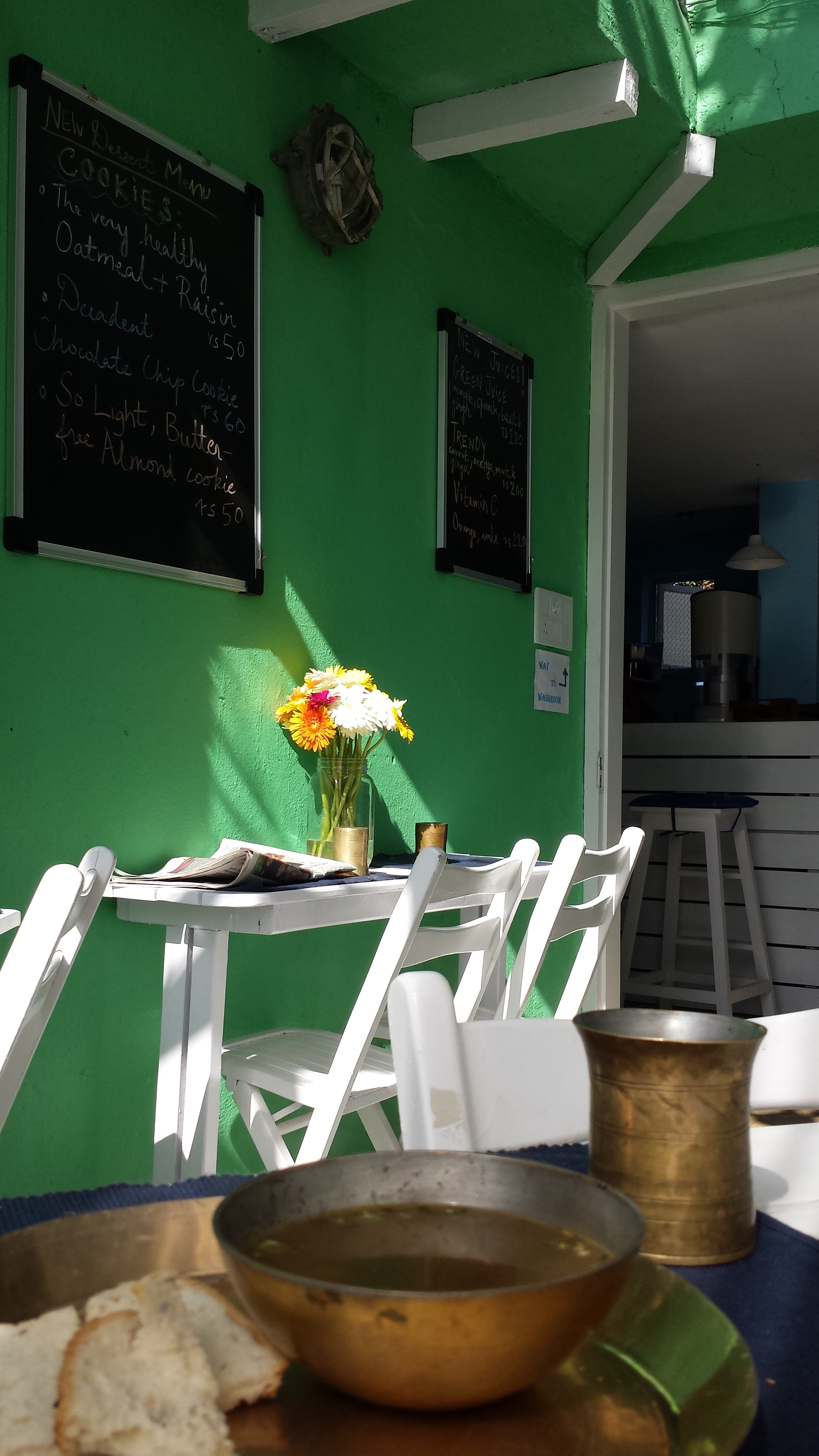
I waited for the classes to begin in the café upstairs, sipping soup and contemplating which raw vegetable I would inhale first on my return to the USA. It was one of the most beautiful cafés I’ve been in with very friendly waiters and more trees than I’d seen in what felt like a lifetime.
Both classes at the second yoga studio clearly catered to foreigners. The instructors play calm, international (European) music and smile a lot. However, the instructions are still intensely loud and the teachers are not turned inward as many of the US-based instructors I’ve practiced with are. Those in India are there to provide a service; to help you walk rather than to walk with you. The instructor of the second class gave me a ride to the taxi stand, where I was transported safely to the 2-day-old “Terminal 2” of the Mumbai International Airport.
From a country of more people than the government can count, intense gold, orange and fuchsia, livid honking, and wafts of curry powder mingling with burning patchouli, a new lens was painted over my eyes. I am grateful those who traversed the land which is today incredible India.
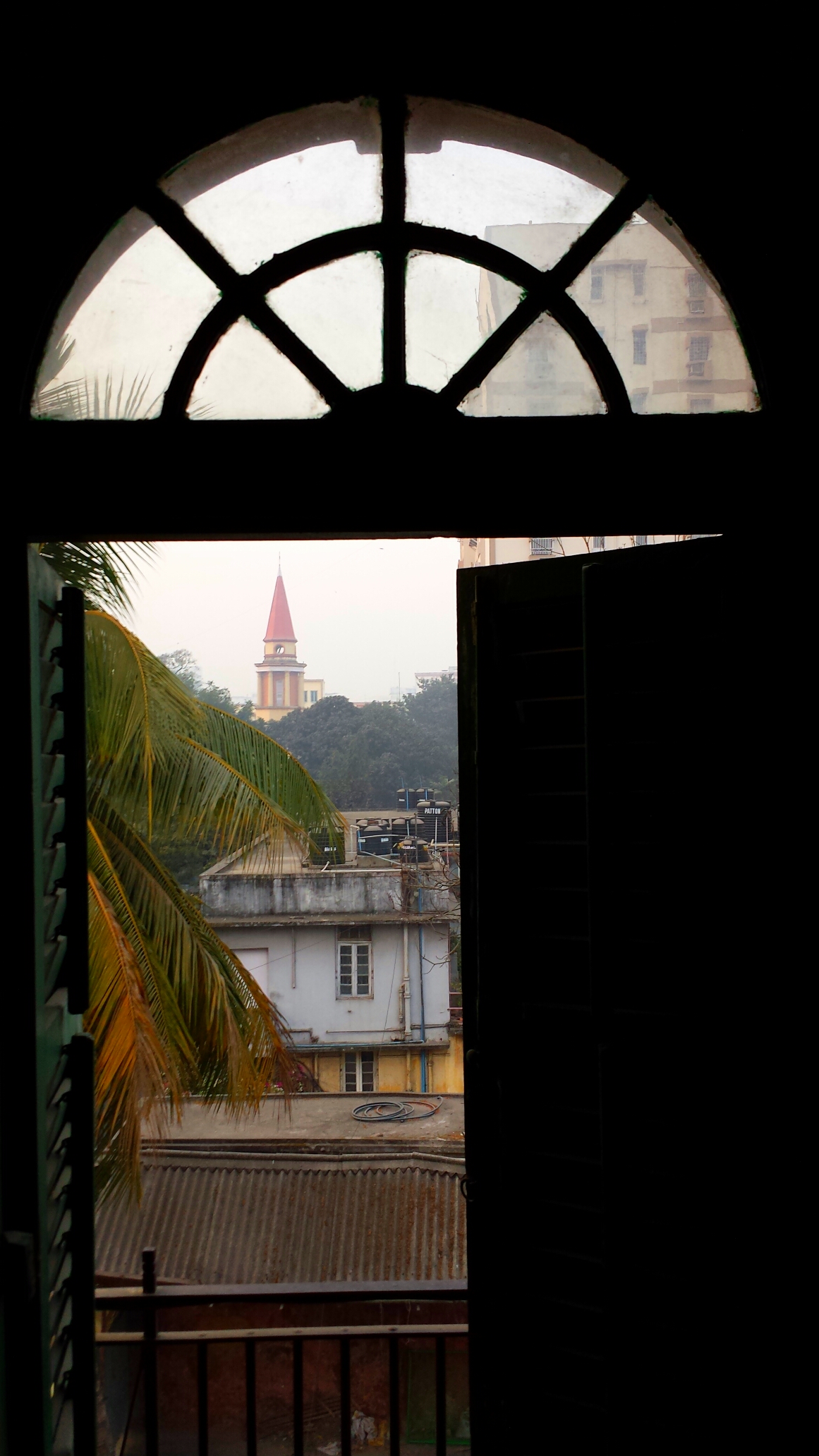 I am thankful for those who pointed me in the right direction: everyday people skirting around cars on unpaved roads, doctors listening to the coughs of 70-80 patients per day, nuns hugging children and volunteers, shopkeepers and beggars reaching out to tourists, and others exchanging glances as they sip hot chai. Somehow, the residents of India still had the energy to share their time with me and teach me to see through this new lens of humility, awe, curiosity and compassion.
I am thankful for those who pointed me in the right direction: everyday people skirting around cars on unpaved roads, doctors listening to the coughs of 70-80 patients per day, nuns hugging children and volunteers, shopkeepers and beggars reaching out to tourists, and others exchanging glances as they sip hot chai. Somehow, the residents of India still had the energy to share their time with me and teach me to see through this new lens of humility, awe, curiosity and compassion.
Namascar, India. Thank you.
